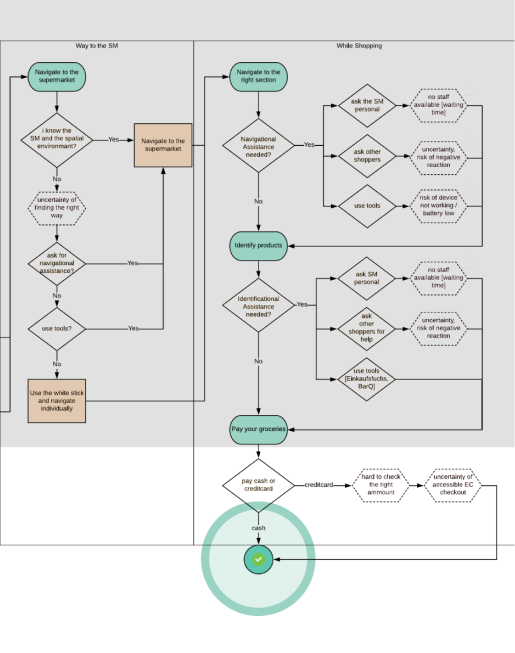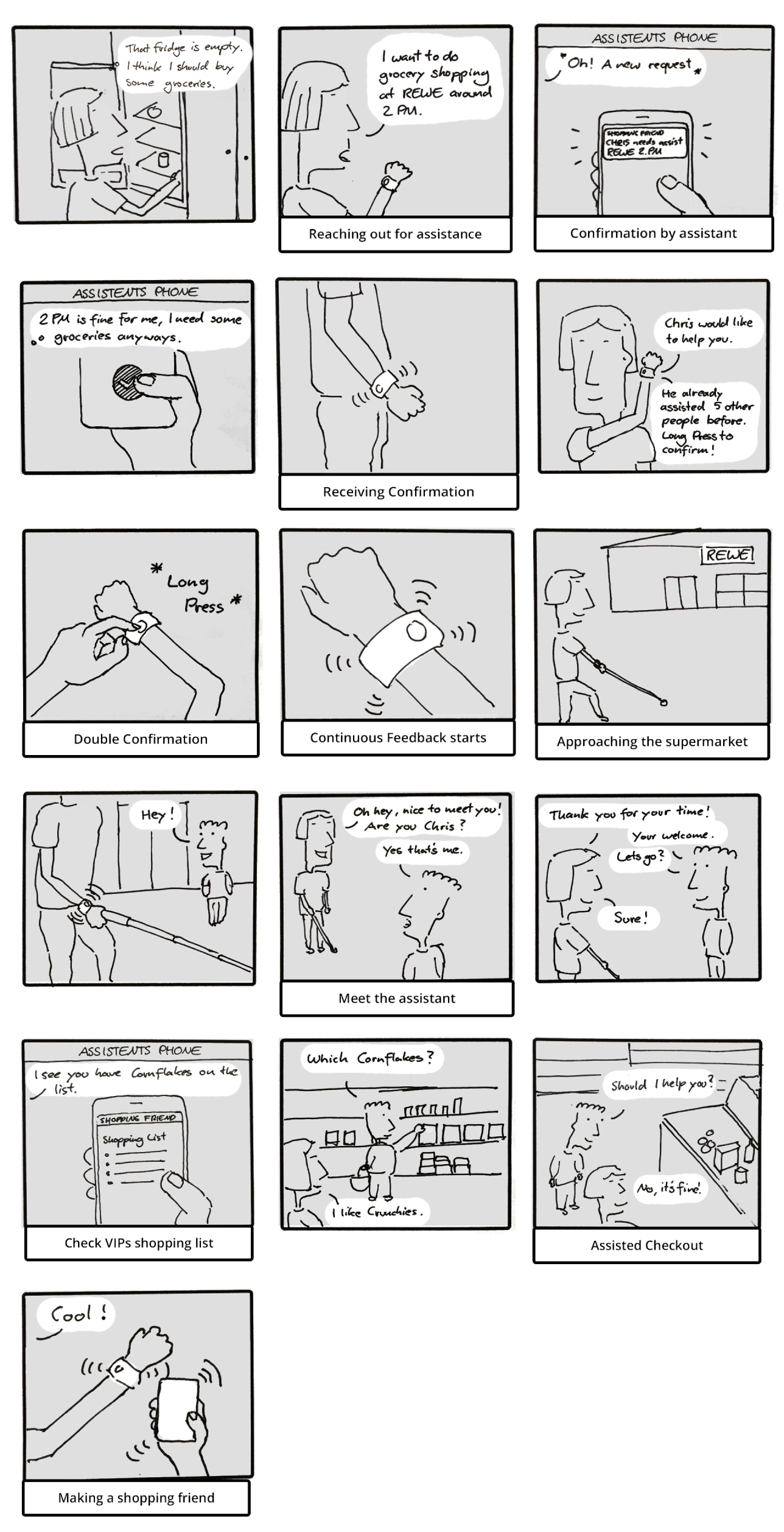The context of shopping with visual impairment
Shopping for groceries and other daily supplies is self-evident to everyone and simultaneously embodies an act of independence and autonomy. Still, some people have a very different experience than others. Visual impairment, comprising in the spectrum from minor eye weakness to full blindness, is a common influential factor here. This project investigates the experience of half- and full-blind shoppers and aims to propose concepts of how to reduce hurdles and improve the shopper's experience.

The approach
The project was planned in an human-centered design manner, involing an explorative research in a first step to get a grasp on what a current shopping experience for people with visual impairment looks like. In a second step, insights were further processed to design requirements that serve as foundation for the generation of improvement ideas. The testing phase was postponed due to the fact that the focus was on an in-depth investigation of the context itself rather than product development.

Explorative research
Research was conducted to understand the act of shopping and respective influence by a visual impairment. Seven participants with either half or full visual impairment as well as two caregivers were interviewed in a remote setup. While the cooperation with people of different eyesight involved some challenges interesting insights were drawn from this study.
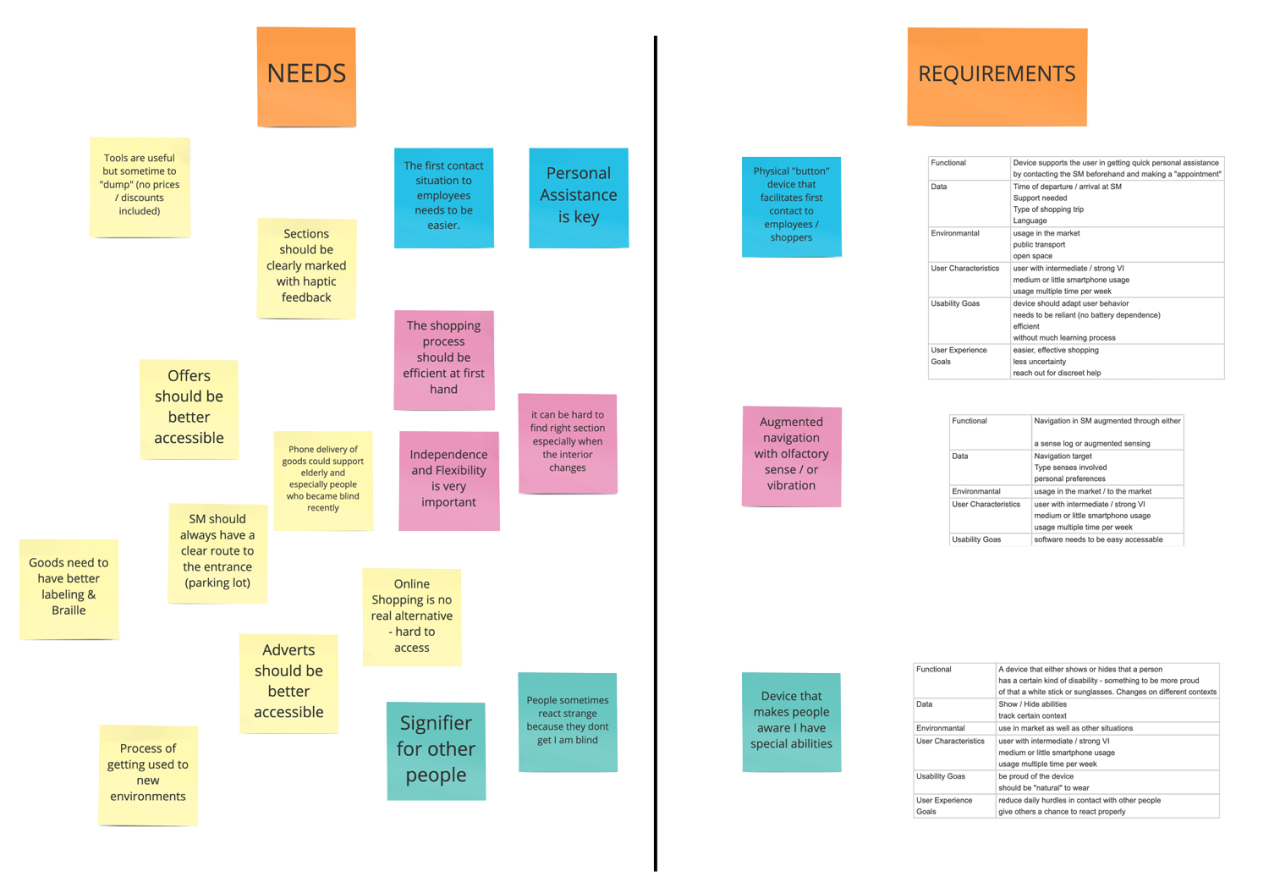
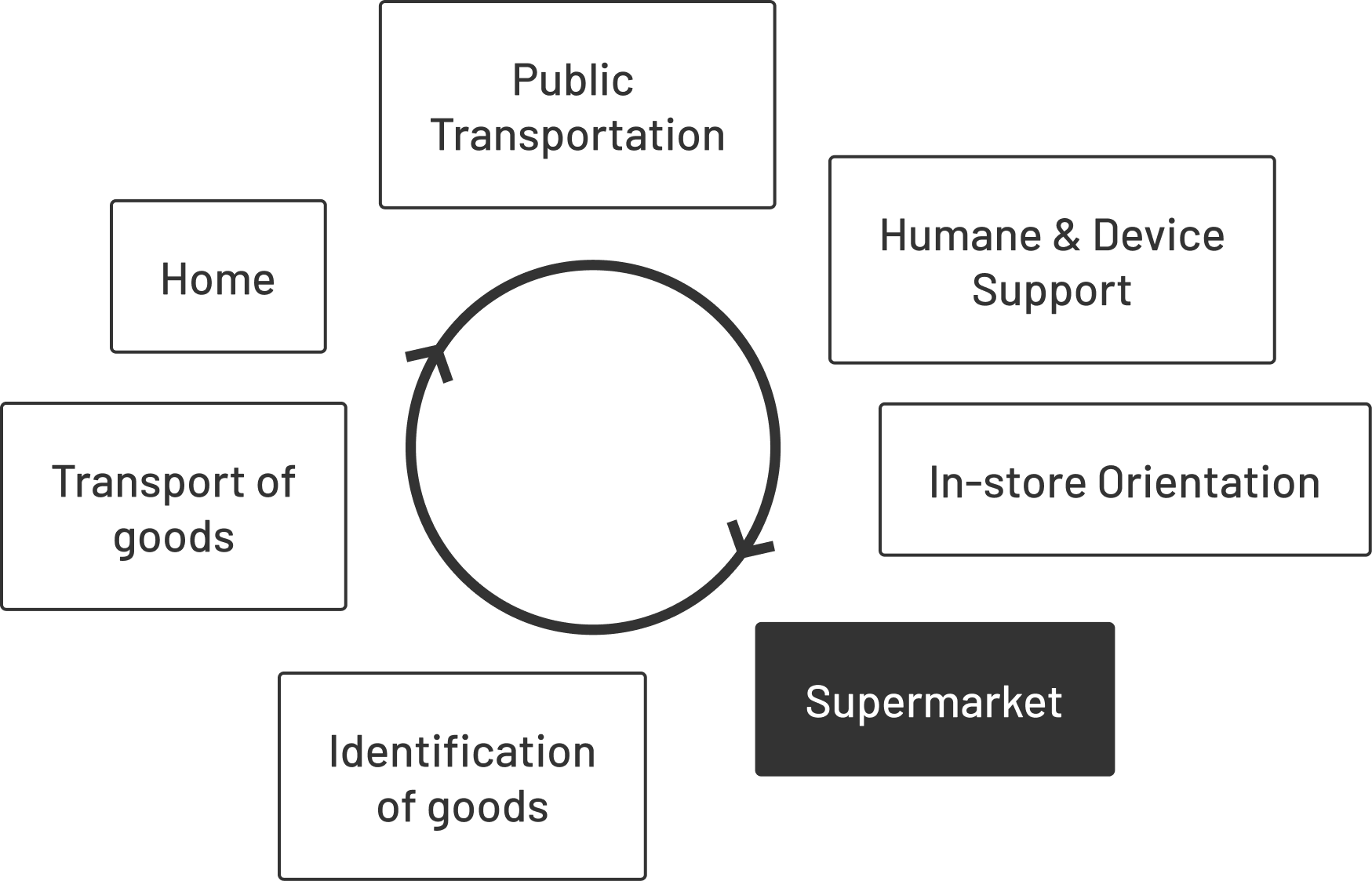
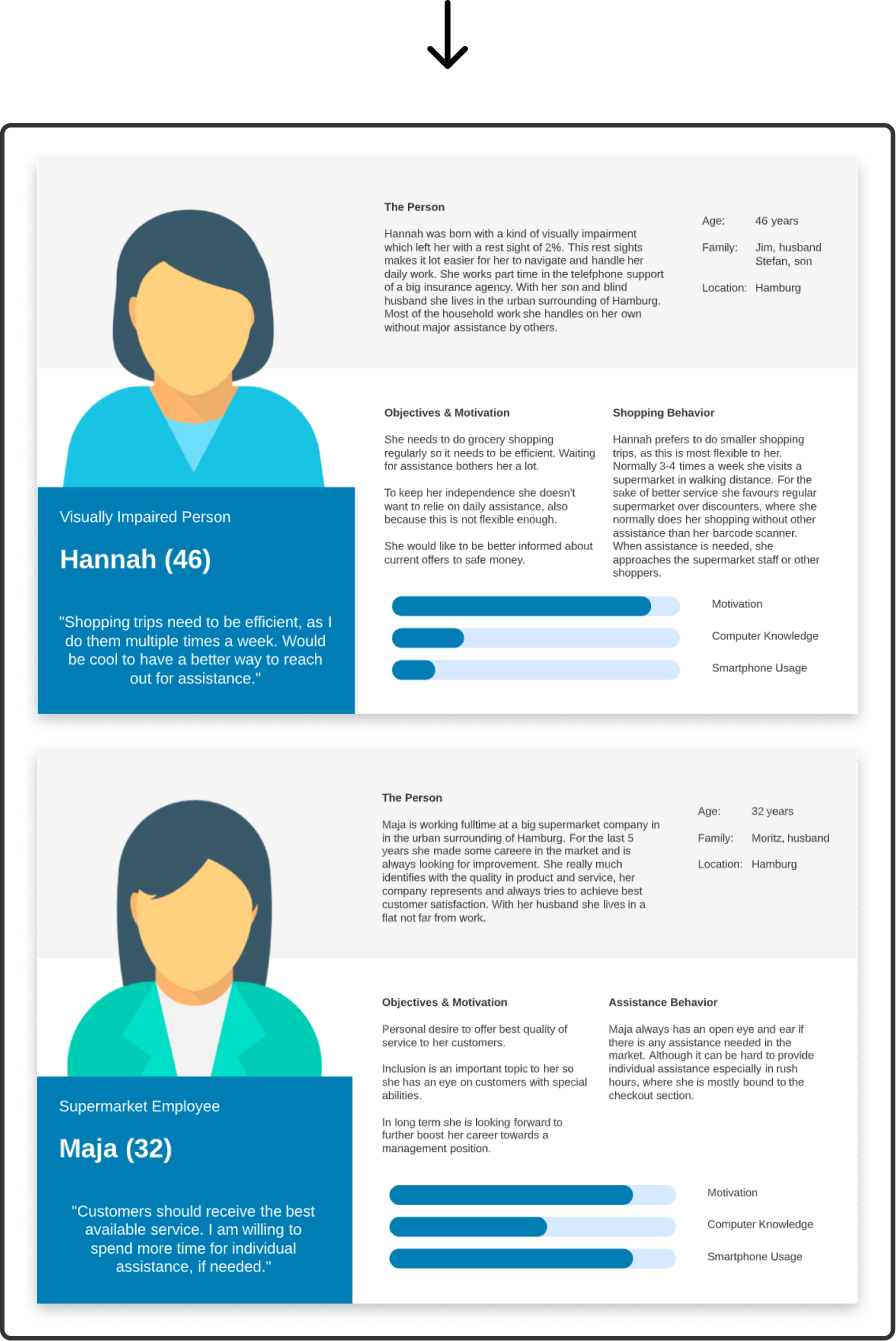
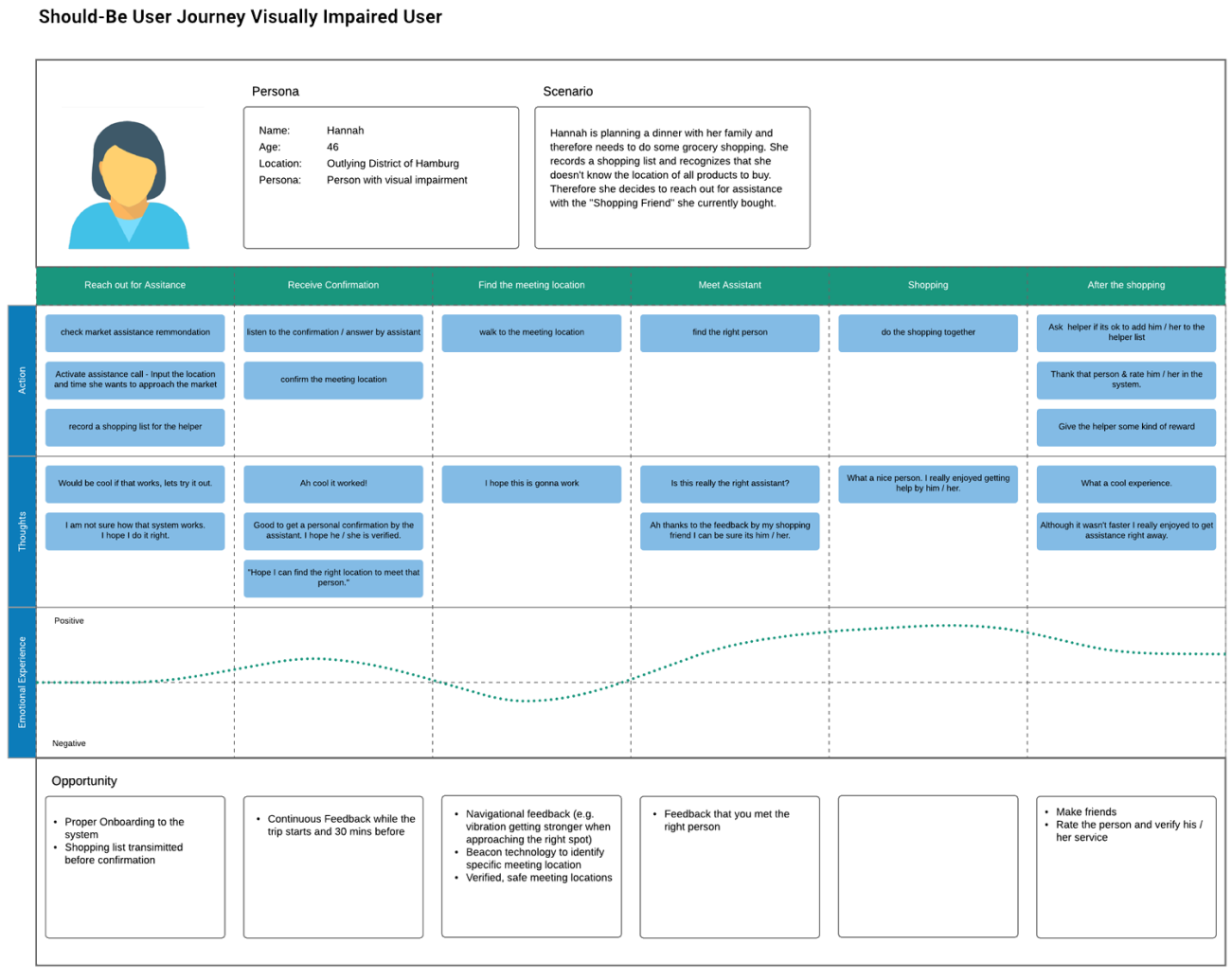
Construct the process of shopping
The shopping process is constructed in a flowchart visualizing multiple steps of decision making as well as several pain points and objectives of shoppers. Weak points and improvement potential is identified.
Design requirements
In order to involve the user's voice along the process of designing, Personas were conducted involving both sides of shoppers and vendors.
IoT shopping vision
A future scenario was designed on how wearable technology can enhance the accessibility of shopping, ultimately resolving in a better experience. A wearable device, powered by extensive tactile feedback, is therefore connected with a support community application.
